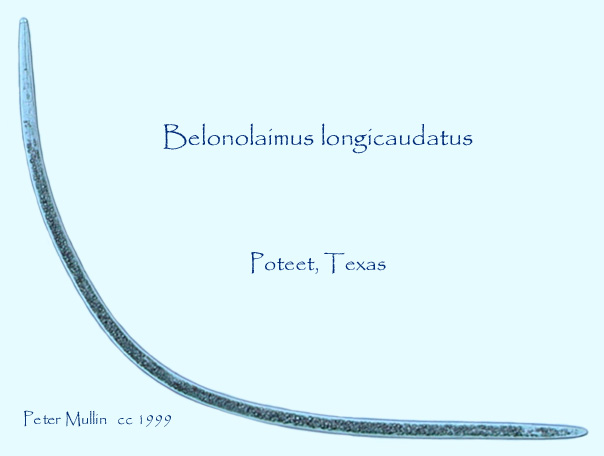Belonolaimus species.
The Sting Nematode

-
Damage to Corn. Belonolaimus is extremely damaging
to corn. Numbers as low as 1- 10 per 100 CC of soil can cause damage to
corn seedling.
-
Biology. There are at least two Belonolaimus
species that feed on corn roots in North America. All are large
nematodes (between 1.0 – 3.0 mm) possessing a characteristic
long,
slender stylet.
-
Ecology. Sting nematodes are restricted to very sandy
soils. In the north central states they become active as soon as
soils become warm. As the season progresses, they appear to migrate deeper
into the soil profile.
-
Symptoms. Sting nematodes severely trim the lateral
roots of corn seedlings. Stunted plants occur in patches throughout
a field.
-
Damage to other crops. Sting nematodes have a wide
host range including soybeans, wheat, peanuts, beans, and other crop plants.
-
Control. Rotation with alfalfa has been successful.
Chemical nematicides have been successful in reducing sting numbers.
-
References.
|